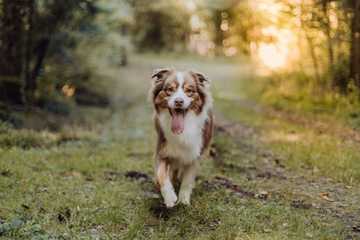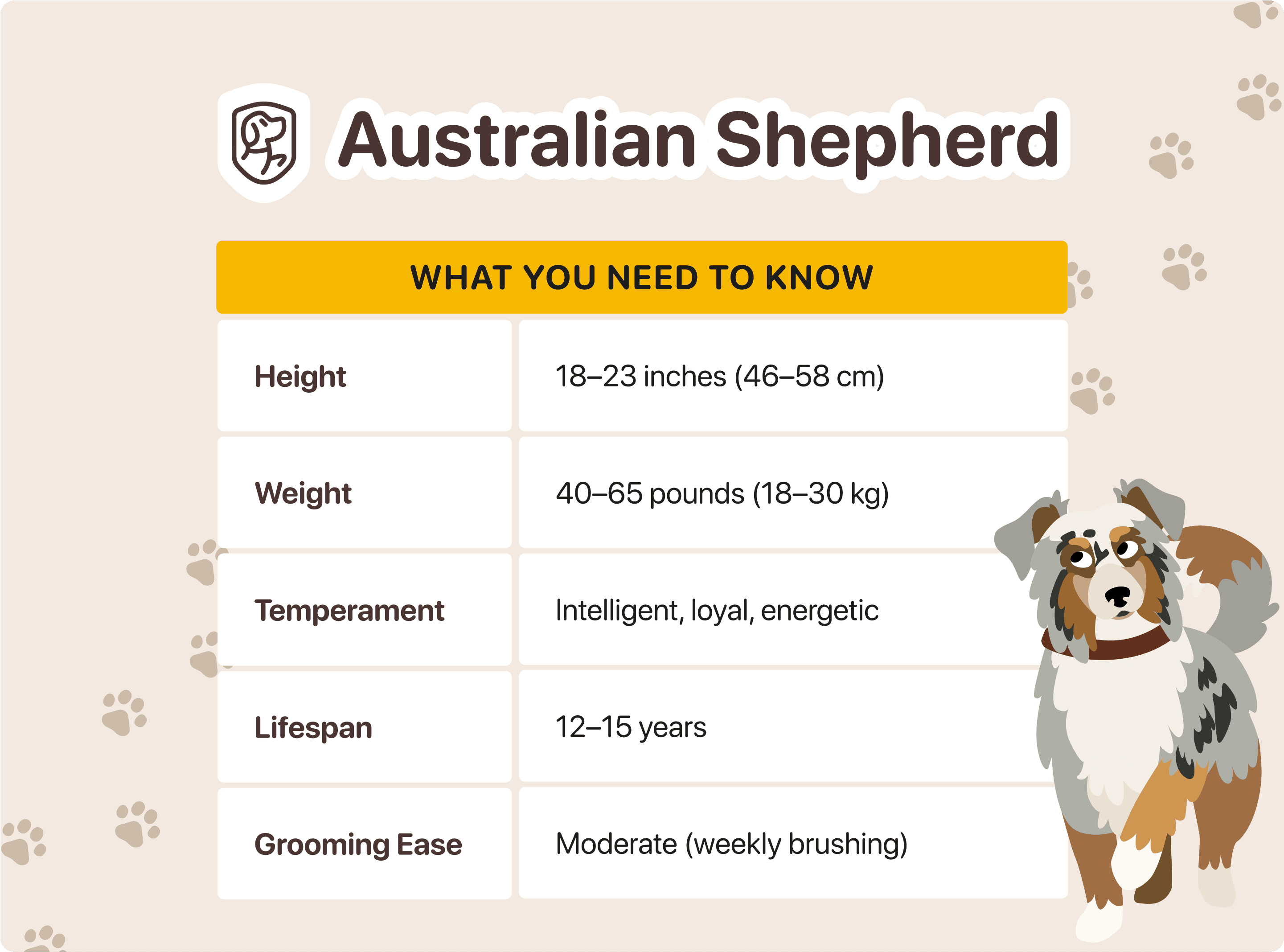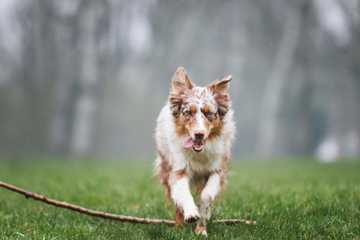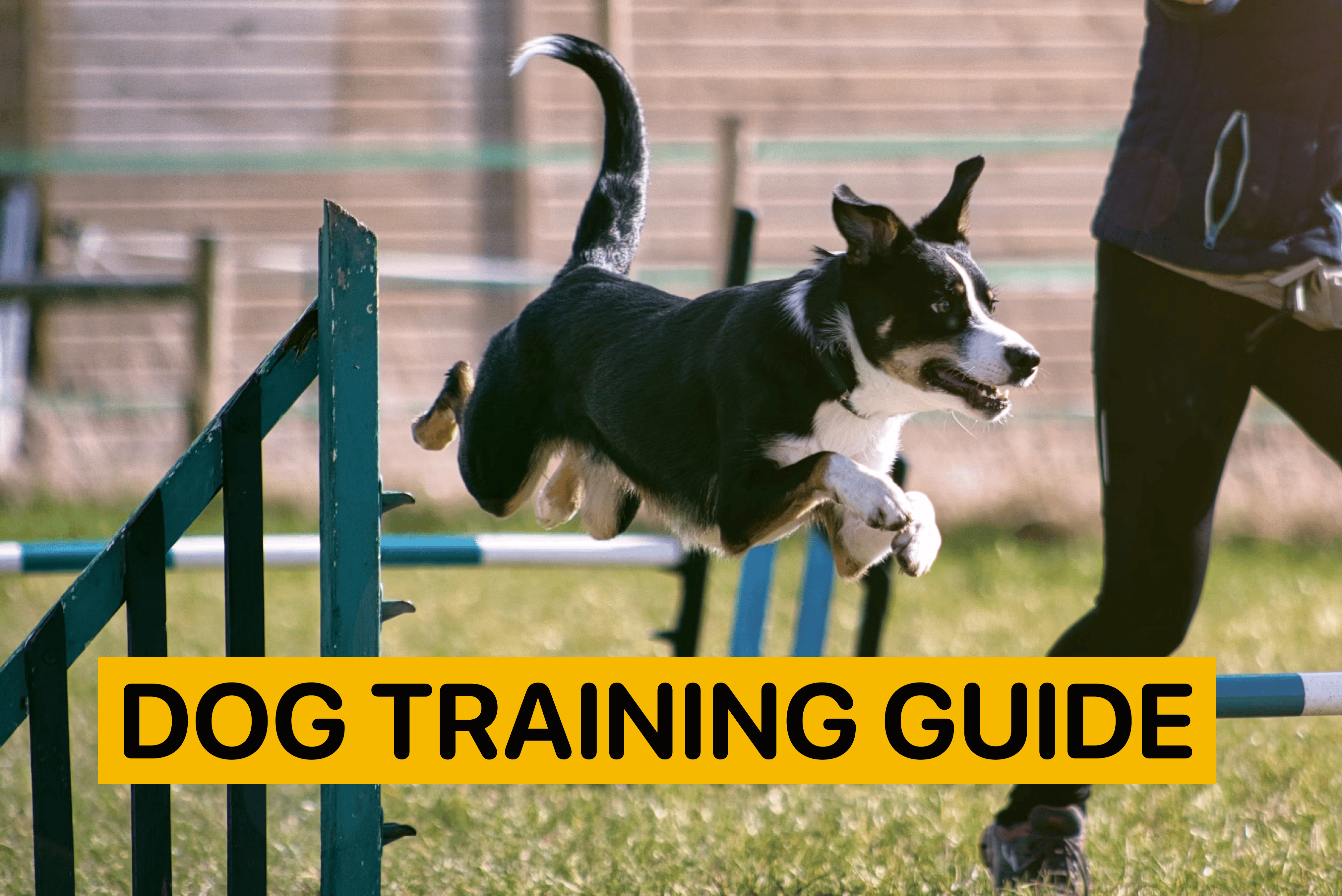Australian Shepherd Training Tips: What Every Owner Should Know

By
Woofz Team Updated on |Reviewed by Shannon Kenny
Key Takeaways
- Australian Shepherds need daily physical exercise and mental stimulation
- This dog breed shows strong loyalty to family members, finding complete happiness through spending time with their loved ones
- Early socialization helps prevent fear-based behaviors from developing into aggression and overprotective tendencies
- Positive reinforcement training yields the most effective outcomes
- The natural herding breed behavior of nipping and chasing requires redirection into activities that are safe for the dog and for the dog's family
- This breed’s tendency to bark can be managed with consistent training and plenty of exercise
- Short training sessions with different activities will maintain their interest in learning.

Fun fact: Did you know that the Australian Shepherd breed started in the United States, and not in Australia? The name comes from Basque shepherds who moved to the US and brought their dogs that look like today’s Australian Shepherd.
Australian Shepherd Characteristics and Temperament
The Australian Shepherd breed comprises high-energy, actual working dogs that are mentally sharp and demonstrate strong loyalty to their owners.

The combination of stunning looks and a smart nature makes Aussies devoted friends to their owners, yet they require daily exercise and mental stimulation to meet their needs. Because of their high intelligence, Australian Shepherds are highly trainable.
Australian Shepherd Activity Level
The working background of the Aussie breed requires them to participate in daily activities that physically and mentally stimulate them. Short walks and casual backyard time do not satisfy their needs.
The Australian Shepherd finds its peak happiness through family participation in activities and outdoor adventures with dog owners, as well as involvement in dog sports. Active families who enjoy hiking, running, or participating in dog sports will find Aussies to be an excellent pet choice.
Understanding Australian Shepherd Temperament
The Australian Shepherd unites mental ability with loving behavior and absolute dedication to their family members.
Key temperament traits:
-
The dog develops strong bonds with their owners because they often seek to stay near them, though it’s also important for dogs to learn how to cope with being alone
-
They show instinctive caution toward new people, which makes them effective at protecting their territory
-
Aussies were bred to have jobs to do, so they'll need to engage in activities like playing, working, or learning new skills
-
The Aussie breed learns quickly, but loses interest when presented with tasks that they find boring
-
This breed loves learning and picks up on patterns quickly. If training isn’t consistent, they’re more likely to get confused than stubborn, so keeping things clear and predictable helps them succeed.

The following herding behaviors commonly appear in this breed:
-
These dogs develop a habit of biting at the heel when they encounter moving pets or children
-
Aussies use circular movements and path-blocking to control the movement of other dogs
-
They may chase after vehicles, bicycles, and runners unless they get appropriate dog training.
Training an Australian Shepherd from an early age helps manage their natural behaviors, channeling them into positive activities like agility and obedience sports. The correct environment helps Australian Shepherds develop into devoted companions who maintain their high energy levels while showing complete dedication to their family.

How to Train an Australian Shepherd
Aussies are brilliant, determined, and sometimes too clever for their own good. Successful Australian Shepherd puppy training isn’t about suppressing instincts but about redirecting their natural drives into positive behaviors. Here are breed-specific training tips for common challenges:
Aggression Prevention
The natural protective instincts of Aussies will turn into territorial animal behavior when they lack proper socialization.
-
Early socialization helps your puppy develop into a confident adult by reducing fear-based reactions and teaching them to stay calm in new situations
-
Positive reinforcement should focus on calm body language, such as sitting quietly or sniffing calmly, because these actions receive your attention
-
Teach impulse control. The commands "Wait" and "Leave It" are essential because Australian Shepherds often respond with intense enthusiasm or impulsive actions when they become excited.

The training process of redirecting unwanted behavior while rewarding the correct response should replace punishment for these dogs.
Excessive Barking
The herding nature of Aussies leads them to express themselves through vocalization.
-
Identify the trigger. The main reasons Aussies bark include feeling bored, becoming excited, or feeling protective of their territory. Identifying the source enables you to develop appropriate training responses.
-
Teach a “Quiet” verbal cue. Mark the instant your dog stops barking and immediately reward them. Over time, extend the required period of quiet before marking and rewarding, so your dog learns that staying quiet, not barking, is what earns the reward.
-
Redirect energy. When your dog starts barking uncontrollably due to boredom or frustration, you should give them work to do by asking them to fetch toys or practice new tricks, which directs their excess energy into productive activities and desired behavior.
Nipping
Herding dogs naturally bite at heels during work, and this behavior is the leading reason Aussies get complaints from their owners.
-
Redirect to toys. When your dog starts nipping at your hands or heels, you should immediately present them with a chew toy or tug rope. The herding instinct receives a safe outlet through this redirection.
-
The play session should end when your dog continues to nip at you. The smart nature of Aussies allows them to understand that biting will end the fun.
-
Herding breed activities such as frisbee play, agility training, flyball, and Fast CAT competitions serve as excellent outlets for their natural instincts and excess energy.
Children need to learn proper household rules for interacting with dogs. Establishing clear rules during playtime, mealtimes, and rest helps protect everyone from harm while also minimizing the chances of unwanted behaviors becoming habits.
Separation Anxiety
Aussies develop intense family bonds, which can lead them to experience distress when left by themselves. The process of leaving should start with brief absences, which you should gradually lengthen. This process helps your dog become more comfortable with being alone.
-
Work on crate training. When properly trained, the crate provides your dog with a secure den environment, which helps them feel at ease when you’re away from the house and keeps puppies safe.
-
Offer enrichment. The combination of puzzle feeders, Kongs, and snuffle mats provides mental stimulation, which transforms solitary periods into positive experiences.
-
Maintain a calm demeanor when you leave or enter the room.

Stubbornness and Disobedience
Australian Shepherds possess intelligence, but they also exhibit independent thinking behavior. The dog will ignore training sessions when they become too repetitive or dull.
-
Use high-value rewards. The combination of treats, toys, and praise rewards should be used in rotation to prevent your dog from losing interest.
-
Add variety. The combination of obedience classes, trick learning, and agility activities will keep your dog mentally stimulated while preventing frustration from building up.
-
Be consistent. A single instance of reward-based training for undesired behavior will teach an Australian Shepherd that choosing desired behaviors brings success. The foundation of respect and reliability depends on maintaining consistent training methods.
How Much Exercise Do Aussies Need?
Australian Shepherds need structured physical activities because their high energy levels and mental abilities require proper outlets.

They should get at least 1–2 hours of exercise daily, including walks in dog parks, playtime, and mental stimulation such as training or puzzle toys. When Aussies lack adequate exercise, they tend to express their pent-up energy through persistent barking and destructive behaviors, such as chewing and digging.
Wrap Up
Australian Shepherd training requires more than basic command instruction because they need to direct their endless energy. Aussies are happy dogs who become loyal and affectionate when trained with patience and consistency. The best way to train the Australian Shepherd is a combination of physical exercise and mental stimulation, enabling your dog to receive proper socialization and positive reinforcement training, along with engaging activities, which will help prevent unwanted behaviors and strengthen your bond with your dog.


